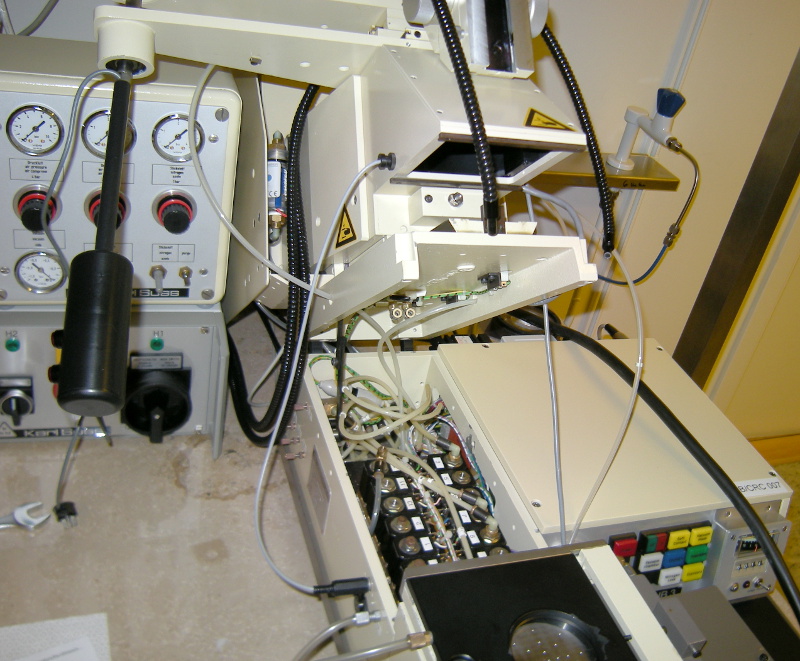
Front microscope removed, two screws removed and lifted upwards /
backwards.
Also front lens removed.

Front microscope removed, two screws removed and lifted upwards /
backwards.
Also front lens removed.
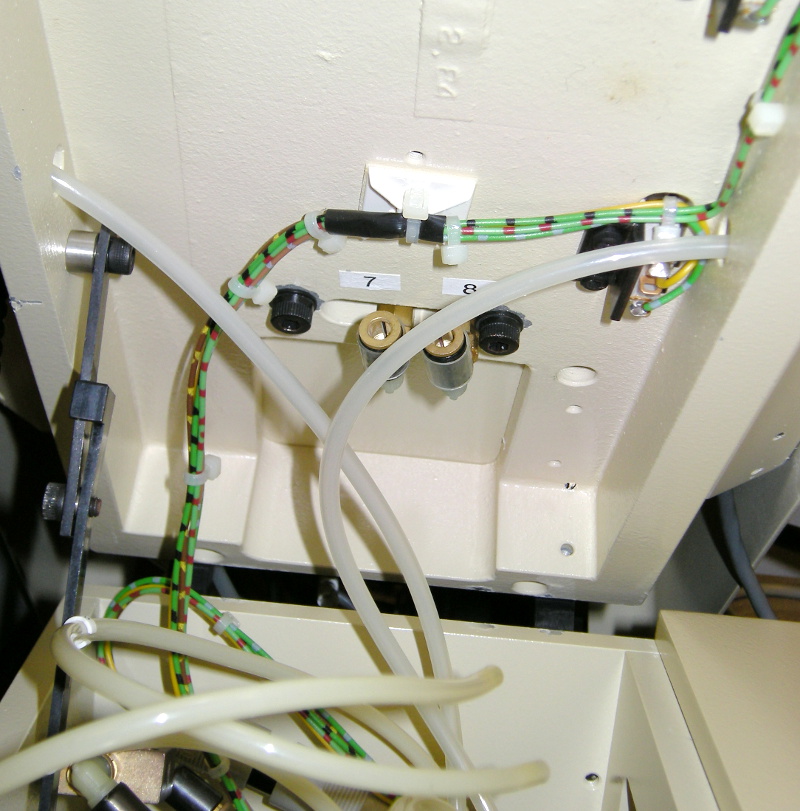
|
|
The two air-connectors for the piston (7) and (8). Tubes removed.
Beside the connectors are the two fastening screws. They are difficult to insert due to washers on the inside, they have to be positioned with a small screwdriver and an inspection mirror. |
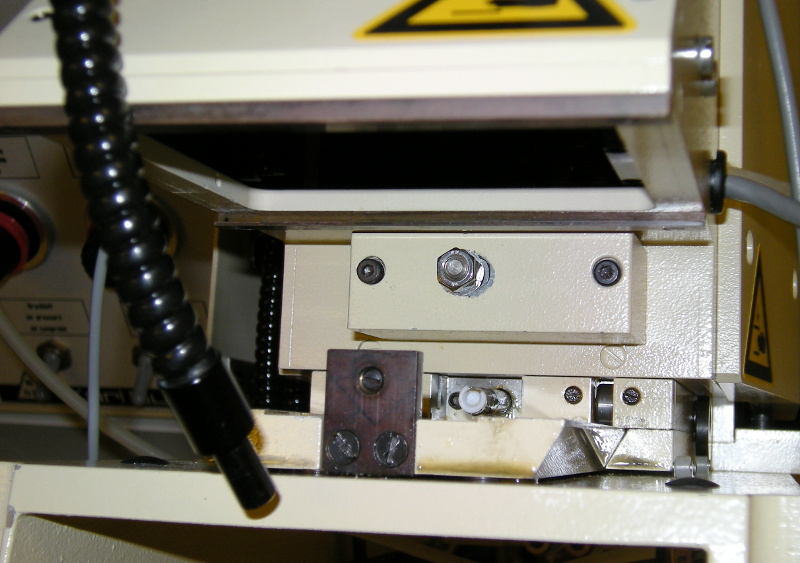
|
|
Front mount for air piston. Note double nut in center and black
fastening
hex-screws for the mounting block on either side.
Below that is the front stop for the mirror house movement. |
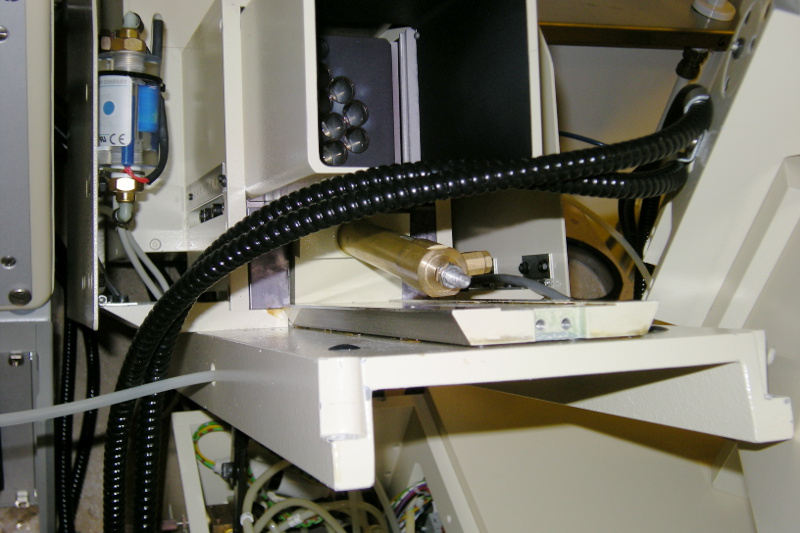
|
|
The front mount removed and the entire mirror house slid away from
the dove tail.
The air piston in the center. The two black hoses are the fibre optic cables for the microscope illumination. |
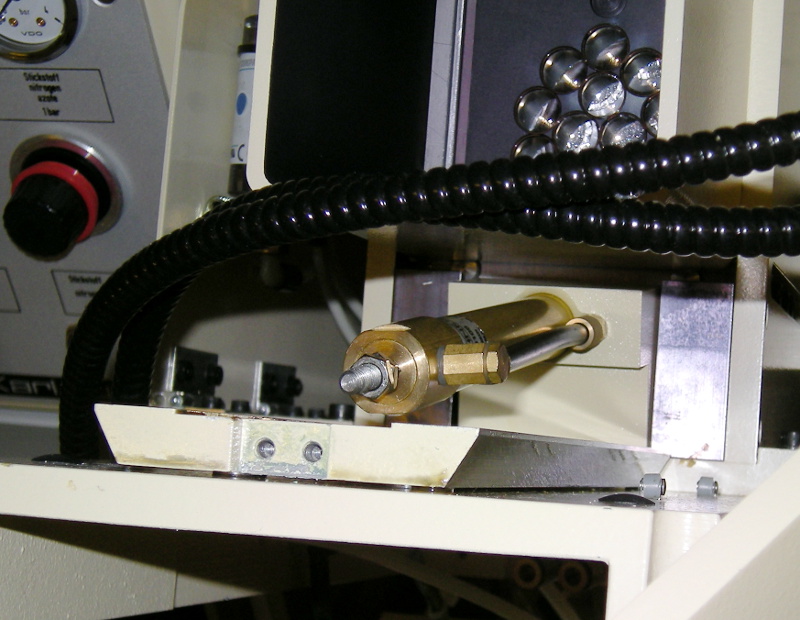
Same, but from another angle.
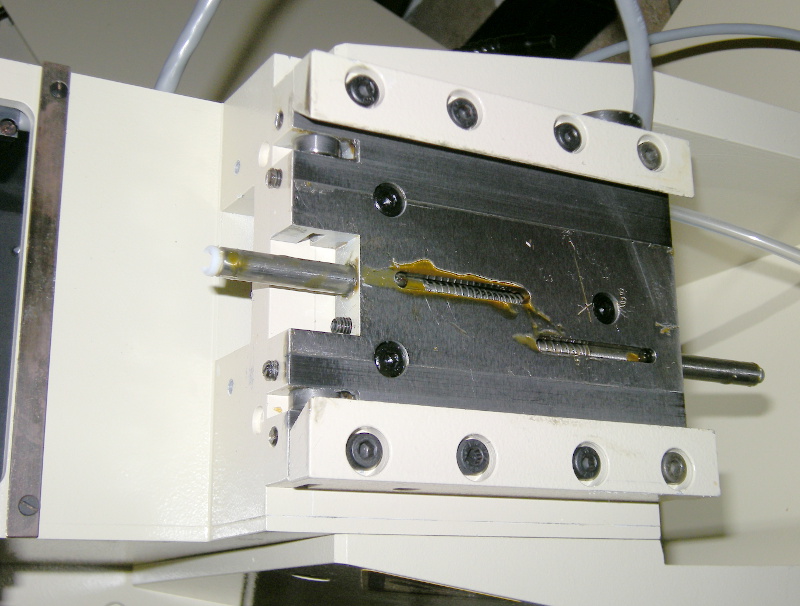
The under side of the mirror house.
Note the spring loaded dampers for
the forward and backwards movement.
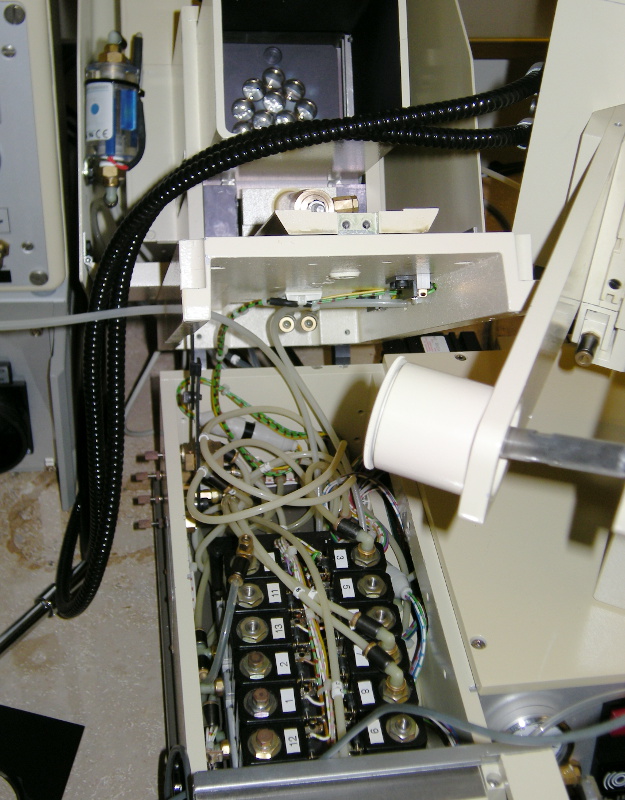
Overview.
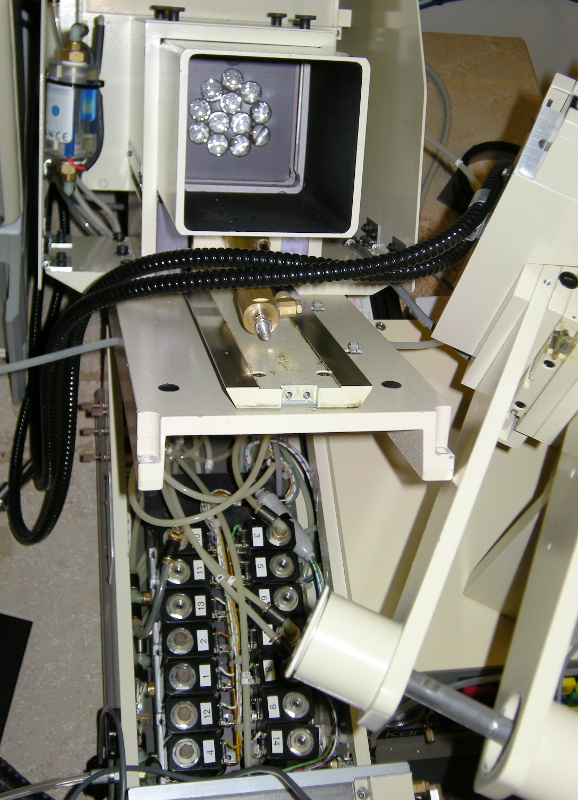
Overview.